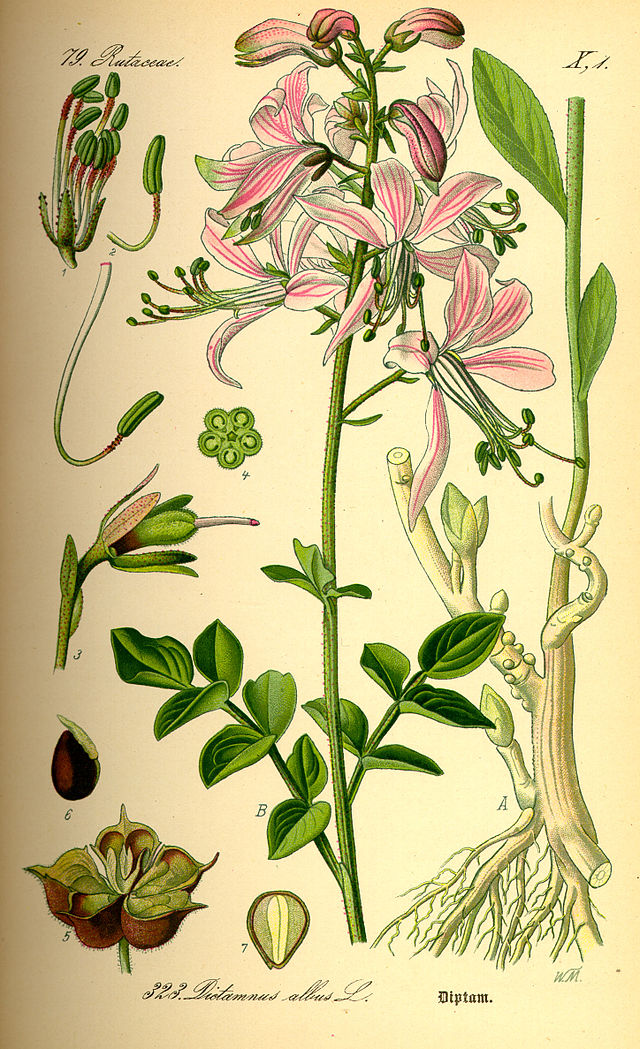Dies ist eine alte Version des Dokuments!
Rutaceae - false dittany, white dittany, Diptam
„Semi-dried, flowering leafy branches were subjected to water distillation: three days after collection
(A), and after fully drying for one year (B). The oils were separately analysed by gas chromatography (GC) and gas chromatography-mass spectrometry (GC/MS) techniques. Twenty-one components were identified making up 97.87 % (A) and 94.70% (B) of both oils (Table 1). The main components in the oils were identified as dictagymnin [1-allyl-4-(3-methyl-3-butenyloxy)-benzene], feniculin [l-(3-methyl-2-butenyloxy)-4-propylbenzene], methylchavicol (= estragole), and trans-anethol. The amounts of dictagymnin and feniculin in oil from dried plant material analysed one year after collection were greater than in oil from semi-dried plant material, while the percentage amounts of methylchavicol and trans-anethol were lower….
The oil from D. albus of German origin was reported to contain limonene, myrcene, and terpinolene as
major components. Limonene and methylchavicol were reported to be the major constituents of D. hispanicus oil . In D. albus oil of Russian origin, anethol and methyl-chavicol were identified as major constituents. The composition of oils in this study closely resemble that of D. gymnostylis. Since the Flora of Turkey and Flora Europea do not recognize any species of Dictamnus other than D. albus, our Turkish material can be recorded as a new chemotype. This is the first report for the co-occurrence of dictagymnin and feniculin in an essential oil.“ [The Essential Oil Composition of Dictamnus albus from Turkey, K. Hüsnü Can Başer, Müberra Koşar, Hulusi Malyer, Temel Özek, Planta Med. 60 (1994), 481-482]
„The detailed study of volatiles of Dictamnus gymnostylis Steven. (Dictamnus albus L., original polymorphic species) considered by many to be the Burning Bush of the Bible, was conducted. In addition to methyl chavicol (~15%), (E)-anethole (~7%) and psoralen (~7%), the presence of over 60% of 1-allyl-4- (3-methyl-2-butenyloxy) benzene (dictagymnin) was confirmed. It was shown that this chemical rather easily decomposes into chavicol and very flammable hydrocarbon 2-methyl-1,3-butadiene = isoprene (b.p. 34°C). The secretion of isoprene, which can be especially intense on hot windless days, leads to formation of the isoprene cloud that may inflame without any harm to the source plant.“ [Study of Dictamnus gymnostylis Volatiles and Plausible Explanation of the “Burning Bush” Phenomenon, Alexander Fleisher, Zhenia Fleisher, Journal of Essential Oil Research, Vol. 16 (1), 2004, 1-3]

